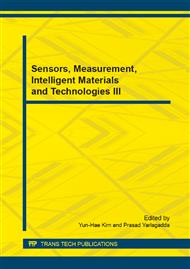p.483
p.489
p.493
p.499
p.504
p.508
p.512
p.519
p.526
Solition Wave of Car-Following Model with Anticipation Effect
Abstract:
In this paper, the nonlinear analysis is conducted for the car-following model with the consideration of the anticipation effect in single line, which was proposed by Peng guanghan. We study the nonlinear characteristics of the model by applying the reductive perturbation method, and drive the Burgers equation, the Korteweg-de-Vries (KDV) equation and the modified Korteweg-de-Vries (MKDV) equation respectively. We find that the above nonlinear equations for this model are identical with those equations for the Full velocity difference model.
Info:
Periodical:
Pages:
504-507
Citation:
Online since:
March 2015
Authors:
Keywords:
Price:
Сopyright:
© 2015 Trans Tech Publications Ltd. All Rights Reserved
Share:
Citation:


